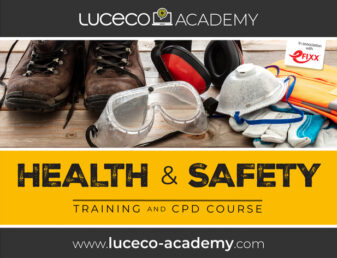This article will explain why you need to be wary of the, potentially fatal, dangers of asbestos.
Asbestos is a name used to describe a group of six different naturally occurring fibrous minerals that are resistant to heat, fire, electricity and most kinds of chemical reactions. Because of these characteristics, asbestos was routinely used in lagging, fireproofing, insulation, textured coatings, roofing felt and many other common materials used in the building trade for many years, until its dangers were discovered.
In the UK, exposure to asbestos kills around 5,000 workers every year – which is why it is vital for you to protect yourself from the danger.
Why is asbestos dangerous?
When asbestos is disturbed fibres are released into the air. When these fibres are inhaled they can cause fatal and serious diseases. The diseases often take a long time to develop but, once diagnosed, in many cases it is too late for treatment.
The main diseases caused by asbestos are:
- Mesothelioma – a cancer which affects the lining of the lungs and the lower digestive tract. By the time it is diagnosed it is almost always fatal and it develops between 20 and 40 years from initial exposure.
- Asbestos-related lung cancer – this has similar symptoms and looks the same as lung cancer caused by smoking or other causes. Smokers who are exposed to asbestos are 75 times more likely to develop lung cancer.
- Asbestosis – a serious scarring of the lungs caused by heavy exposure to asbestos over many years which causes incurable progressive shortness of breath and in severe cases can be fatal.

Where is asbestos found?
Asbestos can be found in any building built or refurbished before the year 2000. It is particularly prevalent in buildings of the 1970s and 1980s. Because asbestos was used in so many different forms and ways it is impossible to always identify it successfully. If in doubt, a licenced asbestos contractor may have to identify and safely remove it from premises.
Certain product types used in pre-2000 built or refurbished buildings can be considered at higher risk of having asbestos in them as, at that time, it was used a lot.
These include:
- Artex coatings (basically any ceilings/walls that have a decorative coating, pattern or texture to them).
- Electrical insulation, including insulating board.
- Floor tiles.
- Lagging.
- Bonded cement.
What does asbestos look like?
There are three commonly found types of asbestos:
- Chrystotile (‘white asbestos’).
- Amosite (‘brown asbestos’).
- Crocidolite (‘blue asbestos’).
Because it was used in so many different forms and ways, it is impossible to always identify asbestos successfully. If in doubt, take advice.
How can I protect myself from asbestos?
- Make sure that you have had asbestos training from your employer. By law, everyone who might disturb asbestos during their normal work, or supervises someone who would do so, must receive information and training to ensure they work safely without risking injury to themselves or others. Asbestos training will also cover what to do in case of an emergency, for example, an accidental release of asbestos dust into the workplace. If you haven’t had this training ask for it. Your employer is legally required to give it to you.
- If you have any concerns that you have found asbestos while working on a job, stop immediately and speak to your employer or the building owner.
- If you are working on a site with asbestos-containing materials then the person in the charge of the job must write and provide equipment and method sheets and task sheets to ensure the job is carried out properly and exposure to asbestos is kept as low as possible. Make sure you have read and understood these documents – and do what they say.
- Use protective equipment – including a suitable face mask. Don’t take home overalls used for asbestos work or reuse disposable clothing or masks.
- Clean up properly as you go, minimising the build up of waste. Make sure any waste is double bagged and disposed of safely at a licenced tip.
- Wash thoroughly before breaks (especially if eating / drinking) and before going home.
- Don’t eat, drink or smoke in the work area.
For more information on asbestos safety go to https://www.hse.gov.uk/asbestos/index.htm






